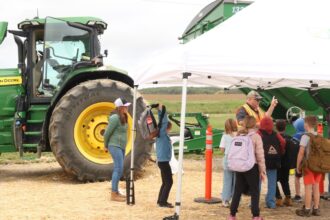In the heart of northern British Columbia, the once-quiet town of Smithers is grappling with an unprecedented rise in street disorder that has left residents on edge and local officials scrambling for solutions. What began as isolated incidents has evolved into a community-wide concern that threatens to reshape the character of this close-knit municipality of roughly 5,400 people.
“I’ve lived here for over thirty years, and I’ve never seen anything like this,” says Eleanor Watson, a longtime Smithers resident and business owner. “People are afraid to walk downtown after dark now. That’s not the Smithers I know.”
Recent police data reveals a troubling 28% increase in public disturbance calls over the past six months, with incidents concentrated primarily in the downtown core and near transportation hubs. The escalation includes open substance use, aggressive panhandling, property damage, and confrontations that have left some community members feeling unsafe in areas they once frequented without concern.
Town council meetings have become increasingly tense as residents demand more visible policing and proactive measures. At last week’s public forum, more than 140 citizens attended—nearly triple the usual turnout—with many sharing personal encounters with disorderly conduct.
Mayor Caroline Henderson acknowledges the gravity of the situation while emphasizing a multifaceted approach. “This isn’t just a policing issue; it’s a complex social challenge that requires addressing underlying causes of homelessness, mental health, and addiction,” Henderson stated during a press conference. “We’re working closely with provincial authorities, outreach organizations, and community services to develop both immediate interventions and long-term solutions.”
The RCMP has responded by increasing foot patrols and establishing a dedicated task force to address the most problematic areas. Staff Sergeant Michael Collins reports that while most incidents don’t involve violence, the unpredictability of encounters has heightened public anxiety.
“Many of the individuals we’re dealing with repeatedly are themselves vulnerable people facing significant challenges,” Collins explained. “Our approach balances enforcement with connecting people to appropriate services when possible.”
Local business owners report declining customer traffic, particularly in evening hours. The Smithers Chamber of Commerce recently surveyed members and found that 63% reported negative impacts on their operations, with some considering reduced hours or enhanced security measures.
“We’re caught between compassion for people clearly in crisis and protecting our livelihoods,” notes James Mercer, who owns a restaurant on Main Street. “Most days I spend time cleaning up debris or asking people to move along before customers arrive. It’s taking a toll.”
The situation in Smithers reflects broader challenges facing many Canadian communities, where housing affordability crises, mental health service gaps, and substance use issues have intensified during and following the pandemic. Provincial data indicates northern B.C. communities have seen disproportionate increases in homelessness over the past two years, with service providers reporting significant resource shortages.
The town has now established a Public Safety Task Force comprising local officials, business representatives, social service providers, and concerned citizens. Their initial recommendations include creating a street outreach team, expanding shelter capacity, improving lighting and public space design, and exploring a community court program for frequent offenders.
Health authorities have also committed to enhancing addiction treatment options and mobile mental health crisis response in the region, though implementation timelines remain uncertain due to funding and staffing constraints.
For many residents, the changes in Smithers represent more than just public safety concerns—they signal a transformation of community identity. “We’ve always been proud of our small-town values and how we look after each other,” reflects retired teacher David Harrington. “Finding our way back to that spirit while addressing these new realities is going to take all of us working together.”
As winter approaches, bringing harsh conditions to this northern community, the urgency for effective interventions grows. The question now facing Smithers extends beyond immediate public safety: can a community maintain its character and cohesion while adapting to complex social challenges that have overwhelmed even larger urban centers with far greater resources?







